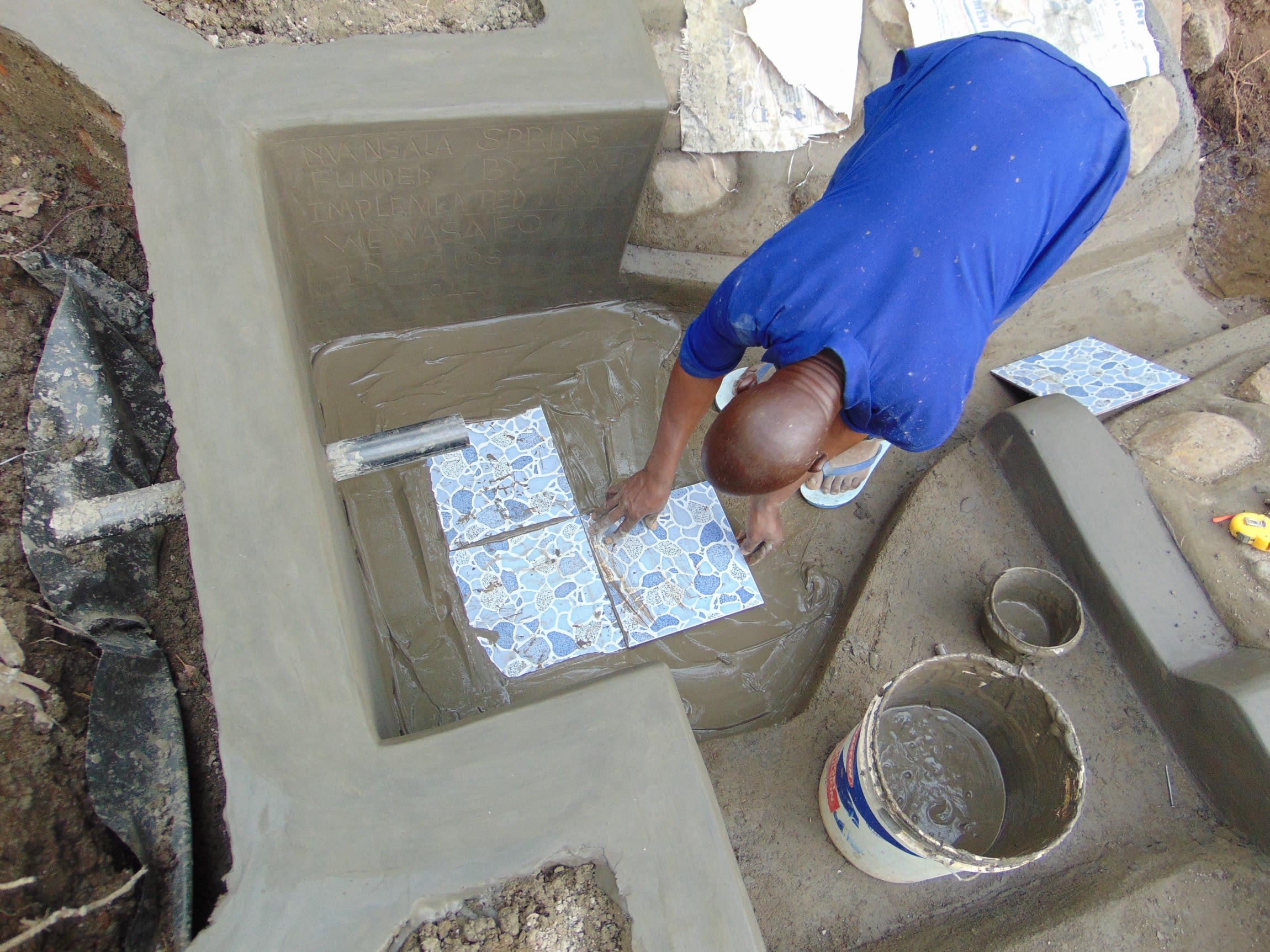The 140 residents of Isembe Community already attempted to protect their Mangala Spring on their own. But without the proper materials and expertise, they actually made their water quality problem worse. They didn't dig a drainage channel or capture the source of the spring, which means all of the dirt and pollutants from uphill now flow directly into their jerrycans.
Tecla Murevi, a local farmer and housewife, served as our guide in the community. She explained how much she has to gain from a reliable source of clean water: "I have seven children, and three of them are below five years. It has been very challenging to raise them, for they, most of the time, become sickly. Diarrhea is one of the major problems. With clean and safe water, it will be easy for me to help reduce these cases."

The most commonly reported health complaints in this community are waterborne diseases such as typhoid and diarrhea, which mostly affect both the oldest and youngest members of the community. But while health is the chief problem within Isembe Community, it isn't the only one.
"The problem is when we get to the spring during the rainy season," said 13-year-old Daniel W., who lives in the community. "It is usually muddy and there are no stairs to help us draw water. One day, I fell and broke the container. This caused me to be [punished]."

This community has plenty of natural resources with which it can be sustained. It is near a river, where many of the residents fish for sustenance and sale. There is also a quarry that can be mined for ballast (gravel).
But with compromised health, many things are unachievable. The villagers have been too weak to be physically or financially productive. They spend a lot of money on treatment, thus bringing other development activities down.
What We Can Do:
Spring Protection
Protecting the spring will help provide access to cleaner and safer water and reduce the time people have to spend to fetch it. Construction will keep surface runoff and other contaminants out of the water. With the community’s high involvement in the process, there should be a good sense of responsibility and ownership for the new clean water source.
Fetching water is a task predominantly carried out by women and young girls. Protecting the spring and offering training and support will, therefore, help empower the female members of the community by freeing up more of their time and energy to engage and invest in income-generating activities and their education.
Training on Health, Hygiene, COVID-19, and More
To hold trainings during the pandemic, we work closely with both community leaders and the local government to approve small groups to attend training. We ask community leaders to invite a select yet representative group of people to attend training who will then act as ambassadors to the rest of the community to share what they learn. We also communicate our expectations of physical distancing and wearing masks for all who choose to attend.
The training will focus on improved hygiene, health, and sanitation habits in this community. We will also have a dedicated session on COVID-19 symptoms, transmission routes, and prevention best practices.
With the community’s input, we will identify key leverage points where they can alter their practices at the personal, household, and community levels to affect change. This training will help to ensure participants have the knowledge they need about healthy practices and their importance to make the most of their water point as soon as water is flowing.
Our team of facilitators will use a variety of methods to train community members. Some of these methods include participatory hygiene and sanitation transformation, asset-based community development, group discussions, handouts, and demonstrations at the spring.
One of the most important issues we plan to cover is the handling, storage, and treatment of water. Having a clean water source will be extremely helpful, but it is useless if water gets contaminated by the time it is consumed. We and the community strongly believe that all of these components will work together to improve living standards here, which will help to unlock the potential for these community members to live better, healthier lives.
We will then conduct a small series of follow-up trainings before transitioning to our regularly scheduled support visits throughout the year.
Training will result in the formation of a water user committee, elected by their peers, that will oversee the operations and maintenance of the spring. The committee will enforce proper behavior around the spring and delegate tasks that will help preserve the site, such as building a fence and digging proper drainage channels. The fence will keep out destructive animals and unwanted waste, and the drainage will keep the area’s mosquito population at a minimum.

 Protected Spring
Protected Spring
 Rehabilitation Project
Rehabilitation Project




































